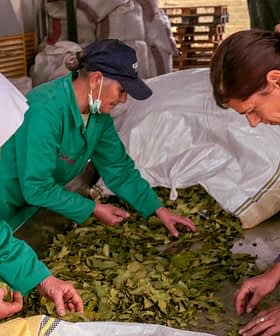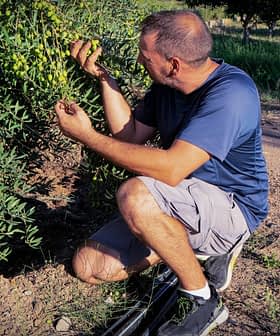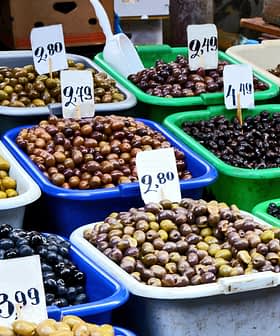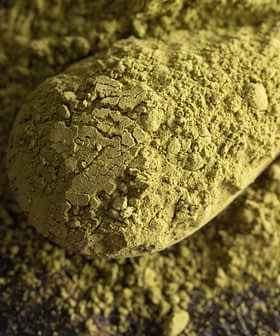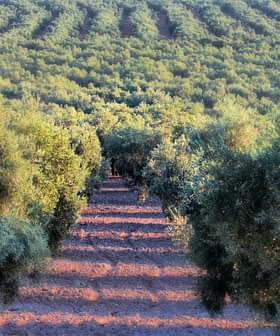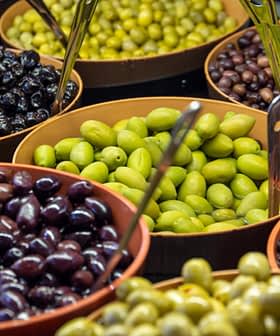Cautious Optimism as Olive Harvest Gets Underway in California

California is experiencing a significant increase in olive oil production, with an estimated three million gallons expected. However, production increases have not been uniform across the state, with some areas experiencing better yields than others due to weather conditions impacting pollination and fruit set.
The olive harvest is in full swing in California, the state responsible for most table olive and olive oil production in the United States.
According to industry sources, olive oil production is estimated to reach three million gallons (around 11.36 million liters), a significant increase from the 1.87 million gallons produced in the previous crop year and nearly 25 percent above the five-year average.
“From what I see, the harvest tonnage will be good,” Nick Sciabica of Nick Sciabica & Sons in Modesto told Olive Oil Times. “The timing will be normal. The oil content was slow but started to increase to normal dates.”
“I am optimistic it will be a good harvest,” he added. “We will be in full production by [the start of November].”
See Also:Global Olive Oil Production Set for Second Straight Year of DeclineHowever, production increases have not been experienced universally across the state, with some producers on the central coast and in northern California expecting better yields than their counterparts in parts of the Central Valley.
“I believe the olive harvest is split this year. It seems fine for the central coast and northern California growers, but it is not very good for the Central Valley growers like myself,” Giulio Zavolta, owner of Olivaia’s OLA in Lindsay, told Olive Oil Times.
Illustrating Zavolta’s point, Richard and Myrna Meisler, the husband-and-wife owners of San Luis Obispo County-based San Miguel Olive Farm, told Olive Oil Times that they expect a bumper harvest after last year’s disappointing yield.
“Only 40 percent of our trees produced olives last year,” they said. “However, 2023 will be a super harvest, as 98 percent of our Tuscan trees have olives.”
“The olive trees will give the farmers a great harvest this year,” Richard Meisler added. “All the growers we have talked with will have a banner year.”
According to Zavolta, cool and damp weather resulted in lower levels of pollination in some parts of the state, leading to lower levels of fruit set.
“After all that rain, the trees looked great, and in the spring, they flowered in ways they had not done in years,” he said. “Unfortunately, we got a couple of weeks where we barely saw the sun, and it was relatively cool just when the pollen was going to do its thing.”
“The temperature simply never got warm enough, and our olive set was amongst the lowest in years,” he added. “After two bad years due to the drought, we were hoping for a good year to offset some of the losses from previous years, but it will be another financially difficult year.”
Meisler added that despite more trees bearing olives, he sees smaller olive clusters on each tree.
“What we see in the trees are smaller clusters, four instead of six olives, or one instead of three and so on,” he said. “There were so many flowers; I believe the trees were stressed too early in the season.”
According to Meisler, San Miguel has experienced different weather, with moderate heat during the day and cold nights.
“The spacing of the olives is a bit inconsistent, and the olive sizes are a bit smaller,” he said. “Many trees are still very unripe, so that we may be about three weeks behind. We call it ‘Nature’s choice’ and pay attention to identify the best harvest timing.”
With the harvest occurring at different times across California, producers are at various harvesting stages. For example, Zavolta said Olivaia’s OLA had already completed the harvest.
“The yield was low as expected – low enough that farming costs will not even be covered, unfortunately,” he said.
Despite the low yield, Zavolta confirmed that the olive quality was exceptional. “The only reason to be optimistic is that, due to the low yield, the olives that we did harvest looked great,” he said.
At San Miguel Olive Farm, Meisler forecasted the olives trees to provide a superior quality first harvest oil, followed by a robust harvest.
“We expect two more harvest days, one or two weeks after the first harvest, depending upon the maturity of the olives,” Meisler said.
Meanwhile, the California table olive forecast is 41,000 tons, up from last year’s crop of 19,912 tons. Record snowfall and plenty of rain have relieved California’s drought, according to the California Table Olive Forecast.
According to the United States Department of Agriculture (USDA), the 2023 California table olive forecast estimated bearing acreage at 12,400 tons, resulting in a yield of 3.31 tons per acre.
For table olives, the forecast is 39,000 tons for Manzanillo production, 1,900 tons for Sevillano, and 100 tons for the other varieties.
While plentiful precipitation helped relieve the state’s ongoing drought, stormy conditions and flooding impacted bee pollination activity and damaged some blossoms.
The USDA confirmed that several growers reported variable crop yields, with Manzanillo yields considerably higher than Sevillano.


